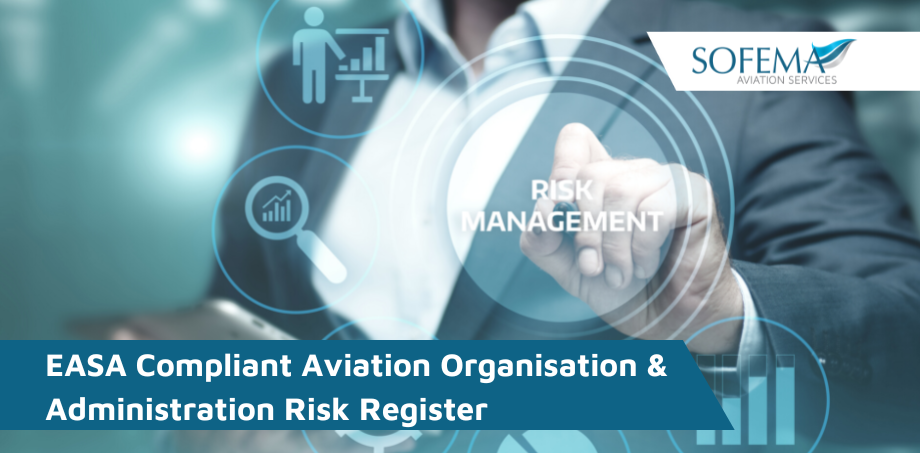Sofema Aviation Services (SAS) www.sassofia.com considers the importance of managing the risks in a systematic and controlled way using a Risk Register as the Fundamental Tool.
Hazard identification is the foundation of the risk management process in an SMS and may be conducted reactively, proactively, and even predictably. A Hazard is something with the potential to cause harm, and risk is the potential outcome of a hazard.
What is the difference between a Safety System Hazard Register and a Risk Register?
A hazard register is a source of information from which we can consider the risks, whereas a risk register contains information related to the nature of the risk (clearly a risk register serves a higher purpose).
The Visibility of Hazards
- Visible hazards – essentially obvious they can be observed, smelt, heard, tasted, or felt.
- Hidden hazards (Sometimes known as latent hazards) are not so easily understood and can relate to either physical hazards such as electricity or non-physical related to poor training, stress, etc.
An Effective Risk Register Process can support the following SMS Analysis:
- ‘Reactive’ risk management (incident investigation).
- ‘Proactive’ risk management (Used to identify potential risks).
- ‘Predictive’ risk management (supported by Data to identify the area of exposure).
As part of the development of an EASA compliant SMS related to Organisation Administration Activities, the Safety Management System will benefit from the development and continuous monitoring of a Risk Register.
A risk register is a crucial part of your approach to managing these risks. It’s a tool to help you identify, assess, and record your risks and the actions you’re taking to eliminate or minimize them.
For each of the following items perform a risk assessment and ask the following 5 questions which help you determine the level of exposure that currently exists in your organisation:
- Is this an issue in our organisation?
- If it is not considered an issue how can I demonstrate it – where is the evidence?
- How can I measure the effectiveness of the current process?
- How effective is documentation/training?
- If there are changes in this element how effective would the system accommodate the changes?
Examples of Potential organizational hazards which can be risk assessed for your organisation:
- Limited or lack of resource availability or planning, including staffing;
- Lack of or ineffective policies;
- Incorrect or incomplete procedures including instructions;
- Lack of or poor management and labour relationships;
- Lack of or ineffective organizational structure;
- Poor organizational safety culture;
- Lack of or ineffective safety management processes (including risk management, safety assurance, auditing, training, and resource allocation);
- Lack or ineffective audit procedures;
- Lack of or limited resource allocation;
- Incorrect or incomplete or lack of training and knowledge transfer;
- Unofficial organizational structures;
- Growth, strikes, recession, or organizational financial distress Mergers or acquisitions;
- Changes, upgrades, or new tools, equipment, processes, or facilities;
- Incorrect or ineffective shift/crew member change over procedures;
- Changes or turnover in management or employees;
- Informal processes (Standard Operating Procedures);
- Lack of or poor or inappropriate materials/equipment acquisition decisions;
- Lack of, poor staffing recruitment/assignment;
- Wrong Qualifications and Abilities.
Next Steps
Follow this link to our Library to find & Download related documents for Free.
Sofema Aviation Services & Sofema Online provide multiple training courses related to Safety Management System Risk and Hazard Training. For additional details visit our websites or email team@sassofia.com
Tags:
aviation, aviation safety, EASA, EASA compliant, Risk Assessment, SMS, Hazard, Risk Register, Aviation Safety Management System, Aviation SMS, Aviation Risk, SAS blogs, Aviation Organisation, Safety System Hazard Register





